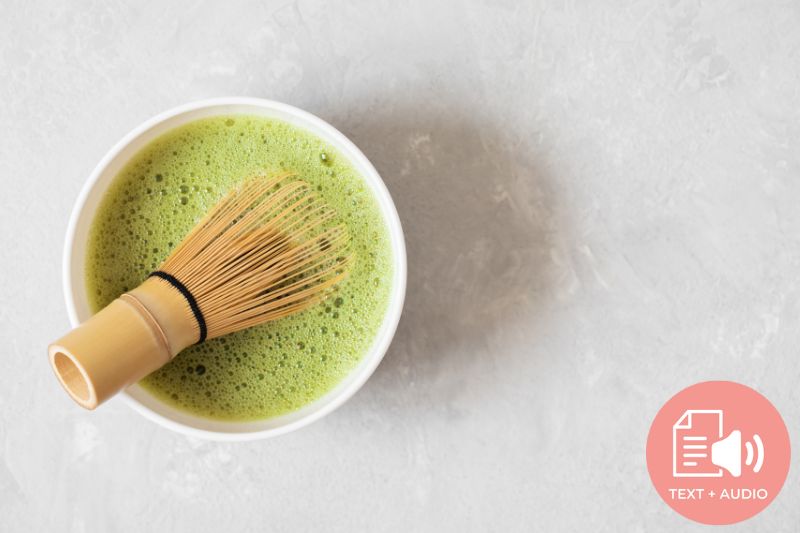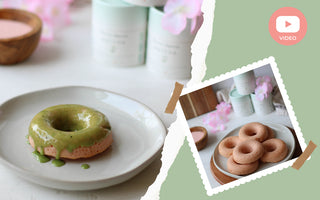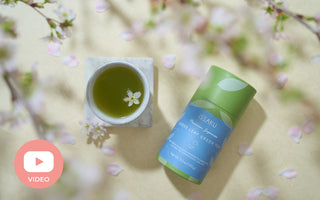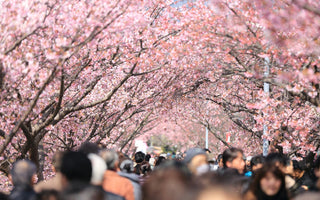Are you the type of person who likes to measure everything that needs to be measured? Unless you are the salt bae type of person who could just dash a proximate amount of salt on his steak, most of us want to have the exact amount or measurement in what we are doing to have the perfect experience, be it cooking, art, music, or, in fact, in almost everything that we do.
What is Chasaku (茶杓)?
Especially in what we consume, we try to be as accurate as possible with what we put in our food and drinks to have the perfect taste of what is instructed in the recipe. While dried tea leaves could easily be prepared by brewing or steeping, the case is different when preparing matcha or powdered green tea, considering it is a powder substance. So, you need to have the right essential tools to prepare this healthy powdered tea. Since many matcha practitioners would argue that one of the most difficult tasks in preparing matcha is getting to the actual amount of powder, one of the most important tools in the preparation of matcha is the chashaku, which literally means "tea scoop" in Japanese. This is a small and narrow tea ladle with a curved, rounded tip that reaches just the point where the chashaku starts to bend. With its very utilitarian design, it is used to scoop the powder and measure the right amount of tea powder, guarantees some measure of control over the prospective brew, and helps to portion out the matcha powder into equal scoops to make a matcha drink into the chawan(茶碗)or the tea bowl used for preparing and drinking green tea.

History of Chashaku
The chashaku originally came from and was an innovation of China. It was designed as a general scooping powder, and when it was first imported to Japan in the Muromachi period around the fourteenth and fifteenth centuries, it was utilized first as a medicine spoon, then specifically as a tea powder spoon thereafter. Back then, the chashaku was made out of carved metal and ivory, or some combination of the two. However, since the ivory ones were too delicate and the metal spoons were too wide, these teaspoons were eventually developed from other woods. After the mid-seventeenth century, bamboo was mainly used as the material for the chashaku. The shape of bamboo chashaku can vary greatly and is of three different types. There are different designs of chashaku, from those for casual or everyday use to those with more elaborate, decorative, and intricate designs being used for traditional tea ceremonies. The formal tea scoop is made mainly from ivory or from a smooth, jointless piece of bamboo, while the semi-formal tea scoop is made of mulberry or bamboo with the joint at the handle end. Tea scoops for everyday use, on the other hand, that were said to have been invented by Sen Rikyuu(千利休), who lived from 1522 to 1591, are mainly made of bamboo with the joint in or near the middle.
Other materials were also used, including mulberry wood, tortoiseshell, and silver, but usually, this is carved out along the vertical growth of bamboo in different varieties and comes in a uniform size, which is usually from 7 inches or 17.8 centimeters to 7.67 inches or 19.5 centimeters long, with a width of one centimeter, made with almost a 48° curve at the base, to aid in making either thin tea or thick tea depending on the number of scoops of matcha. Usually, in the middle of the chashaku will be a nub from the section of bamboo stalk that the scoop was made from. The scoop is flatter and slightly wider than the rest of the body and is used to scoop the powder tea from the natsume, or tea caddy, and transfer it to the chawan.

How to Use Chashaku
One chashaku scoopful of matcha is equal to about a third of a usual teaspoon of matcha powder. To make usucha(薄茶)style brewing tea or thin tea, which is the standard matcha tea that is a lighter and slightly more bitter tea, use the chashaku to scoop out one and a half to two heaping scoops of matcha powder, which is about 2 grams. Koicha(濃茶), or thick tea, which produces a sweeter tea and is served almost exclusively as part of Japanese tea ceremonies, requires significantly more matcha. Koicha needs as many as six teaspoons, and the resulting mixture is significantly thicker. True tea masters in Japan are known to carve their own chashaku. When the techniques for manipulating the chachaku are improved, it takes on various shapes depending on the preferences of the tea masters.

Different Parts of Chashaku
There are different parts of chashaku. The very end of the scooping tip is called tsuyu, while the very scoop itself, or the bowl part, is called kaisaki. The groove in the middle portion is called hi, while the middle portion joint is called fushi, which has the upper part, or fushiue, the lower part, or fushishita, and the scraped-out back of the joint, or arigoshi. The handle itself of the chashaku is called ottori, and the very top part of the chashaku on the handle is kiridome. The chashaku usually has a storage case that is tube-like, called oritame or tsutsu, and is also made out of bamboo. Usually, a poetic name or mei is inscribed on the case, and the selection of the chashaku for use at a traditional tea ceremony or chanoyu gathering will largely depend on its poetic name.
In Japanese tea ceremony study, utensils are seasonal, and some may make an appearance only once a year, so the tools for tea ceremony preparation, such as the chashaku, are given so much importance, from the materials used to the art details for various seasons. There are various tools for preparing a matcha drink, and there is a hierarchy for these preparation tools during a chanoyu. Chashaku is considered the second-most important tool, next to natsume. To clean the chashaku after using it, just wipe it off gently with a soft cloth or tissue.
Get Free Bonus Books

Sign up for free to the Green Tea Club to get advice and exclusive articles about how to choose Japanese Tea, and tips, tricks, and recipes for enjoying Japanese tea.




